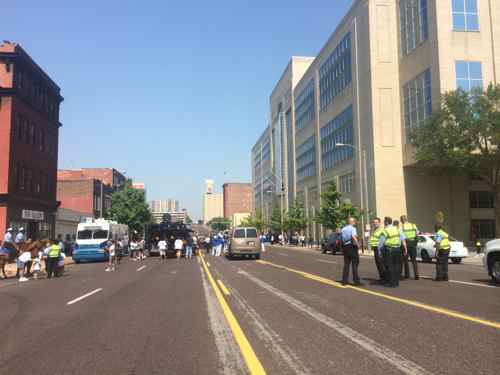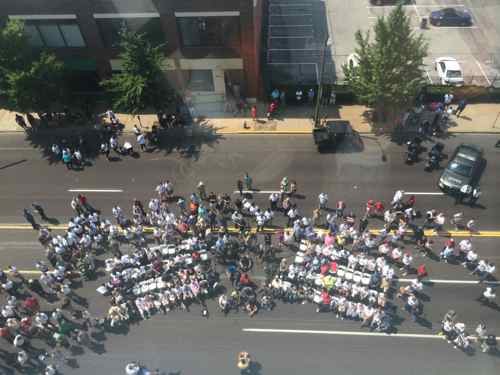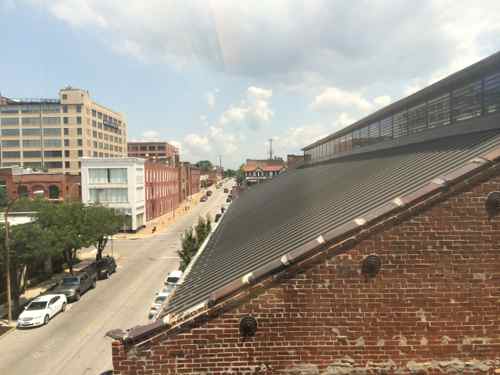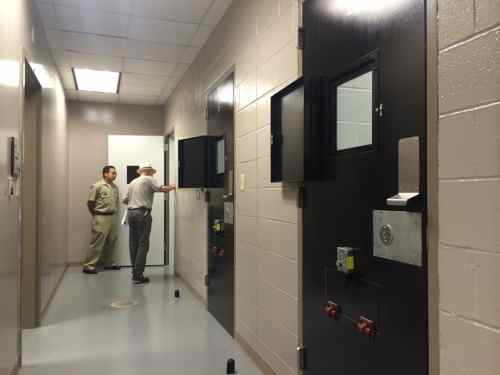40th Anniversary of ‘Gone in 60 Seconds’; Planning/Policy Insights
Today’s post isn’t about St. Louis, but it is about urban planning/policy as observed through popular culture. The movie “Gone in 60 Seconds” premiered 40 years ago today — July 28, 1974. The second half of the movie is a very long chase scene — the police today would never be able to engage a suspect at these speeds. The star is ‘Eleanor’, a yellow 1973 Ford Mustang Mach I. By the premier, the ’73 Mustang had been replaced by the Pinto-based Mustang II. My very first car was a ’74 Mustang II, an awful car.
I’m a public transit advocate that’s also a car nut, this movie filmed in 1973 so many cars.
Company Headquarters/Streets
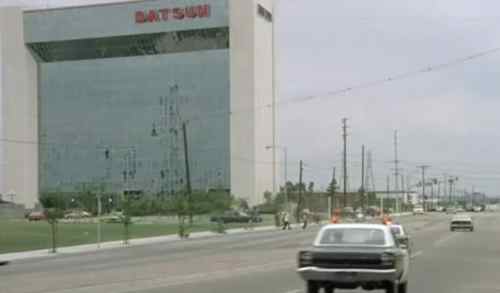
At the time the three biggest Japanese auto manufacturers (Honda, Toyota, & Datsun/Nissan) had their US headquarters very close to each other in Los Angeles County. In late 2005, Nissan announced they were relocating to Tennessee:
Nissan Chief Executive Carlos Ghosn said the Japanese automaker, which set up shop in Southern California in 1958, would spend more than $70 million to build a corporate headquarters complex in Franklin, about 15 miles southwest of Nashville.
Ghosn said the widely anticipated decision was prompted chiefly by cheaper real estate and lower business taxes.
“The costs of doing business in Southern California are much higher than the costs of doing business in Tennessee,” he said. (LA Times)
In April of this year Toyota announced it too would leave California:
Toyota is moving to Texas. The Japanese automaker is consolidating its various United States headquarters operations into a single campus in Plano, Tex.
Right now, Toyota’s sales and finance arms are headquartered in California, while its manufacturing and development arms are headquartered in Kentucky. Toyota also has offices in New York City and some of those jobs will also be moved to Texas. (source)
Another article noted Toyota wants to avoid the problems Nissan faced:
In moving its U.S. headquarters out of California, Toyota hopes to avoid some of the problems that Nissan encountered when it did the same thing in 2006.
Sources inside Toyota say they already dissected Nissan North America’s move and were particularly dismayed to see that their Japanese rival lost roughly 60 percent of its 1,300 Los Angeles headquarters staffers and executives when it relocated to Nashville. (source)
So what happened after Nissan left?
Nissan’s plan was treated with alarm by officials, who made a last-ditch effort to keep the automaker in town. Unswayed, Nissan brass turned out the lights and moved their North American headquarters to Nashville in the summer of 2006. After nearly 50 years in Los Angeles County, Nissan’s nerve center was gone.
Left behind was a cluster of 13 buildings, including a nine-story tower topped with a red Nissan sign that was a familiar sight to drivers passing the intersection of the Harbor and San Diego freeways. More than 700,000 square feet of office and light industrial space lay empty.
In Rust Belt cities such as Detroit, many abandoned commercial buildings fall slowly to pieces. But in a sign of the vitality and adaptive nature of the Southern California economy, the 42-acre Nissan campus has been taken over by 11 different businesses that are expected to employ more workers than Nissan did — about 1,400 in all. (Nissan’s old campus in South Bay gets ‘flipped’)
The campus now has multiple owners, employing more total people in diverse industries. In the developer’s words:
Now complete, Kearny South Bay Business Park employs more people than when Nissan occupied the property. Due to demand and the significant improvements made to the campus, the campus was quickly backfilled by firms in diversified sectors including finance, health services, high-tech manufacturing, fashion, automotive, and food processing which helped to re-energize the entire area. Of the 13 buildings, 7 were sold in 2007, 5 in 2008 and the last office building closed in December 2009. Kearny is proud of this transformation. (source)
As you might expect, the area looks different forty years later. South Figueroa St got a planted median to take up some the excess street width.
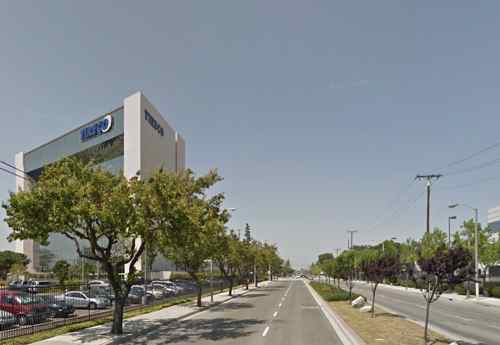
Property Taxes
The movie car chase conveniently goes by the ground breaking ceremony for a new Sheriff’s office where the announcer says:
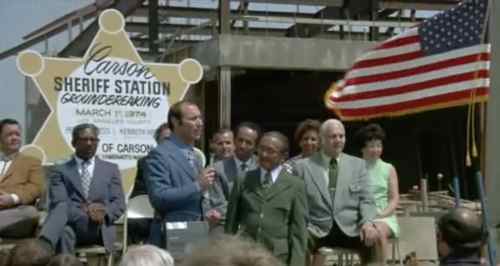
At the time Carson was a new city in the region, with employers like Datsun and attracting more with the lure of no property taxes.
Carson borders Compton:
Soon, middle class blacks also found other areas more attractive to them. Some were unincorporated areas of Los Angeles County such as Ladera Heights, View Park and Windsor Hills; and others were cities such as Inglewood and, particularly, Carson. The latter was significant because it had successfully thwarted attempts at annexation by neighboring Compton. The city of Carson opted instead for incorporation in 1968, which is notable because its black population was actually more affluent than its white population. As a newer city, it also offered more favorable tax rates and lower crime.
A more affluent unincorporated area incorporated rather than be annexed by an area losing its tax base, this happened everywhere.
By the time Carson finally incorporated as a city in 1968, its landscape was pockmarked with the dozens of refuse dumps, landfills, and auto dismantling plants which none of its neighbors would have in their own cities.
As a result, the history of the City of Carson since 1968 has, to a large extent, been the history of struggling to deal with these problems caused by its late incorporation. And to its credit, Carson has worked miracles in the short time since its birth as an independent city.
Following its incorporation in 1968, Carson acted swiftly to close down most of the unwanted facilities that had been foisted upon the city in the past, enforcing a strict building and landscaping code, and a working to attract successful new commercial ventures to the city. As a result, most of the heavy industry of the past has been replaced. The new industrial parks in Carson, such as the Watson Industrial Center, are models of cleanliness and attention to appearance. Beautification efforts by the city have resulted in numerous landscaped center medians, lighting projects, street improvements and public parks.
All these services eventually required property taxes.
b
Carson’s 18.968 sq mi makes it less than a third the size of the City of St. Louis (66.2 sq mi). St. Louis has a slightly greater population density.
b
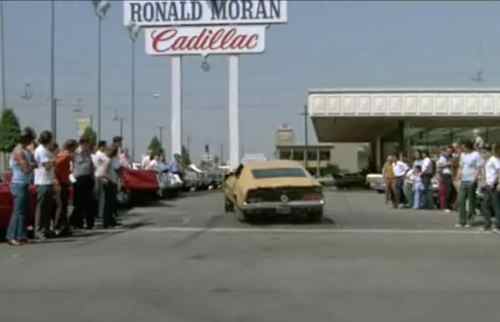
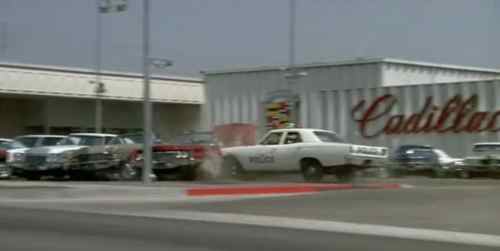
The chase ended up at the Cadillac dealership after passing by the nearby Mazda dealer.

Across Hawthorne Blvd was a wall, but now the road is wider with a median. Across the street is a trailer park.
Eleanor had lap seat belts, no shoulder belt. All the cars had round sealed beam headlights, as required by US law. In 1974 the law was changed to allow rectangular sealed beam headlights. It wasn’t until the easily 1980s that more headlight designs were allowed on vehicles sold in the US.
I’ve rambled enough, I’m going to get a big bowl of popcorn and watch this great movie another time. You can watch it on YouTube here or order a DVD at gonein60seconds.com.
— Steve Patterson

